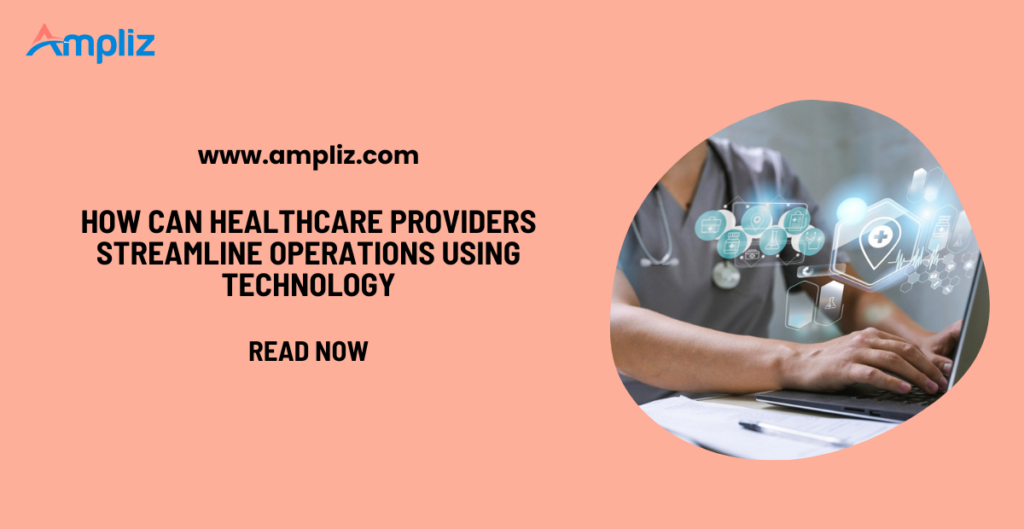Let’s face it: the words “healthcare operations” don’t exactly evoke visions of efficiency. For most people, they conjure up mental images of long wait times, fax machines from the 1990s, and enough paperwork to deforest a small country. But in an industry that deals with real human lives (and a staggering amount of logistics), staying stuck in the past just won’t cut it.
Healthcare providers are under immense pressure to deliver better patient care while juggling staff shortages, increasing costs, and mounting administrative complexity. So, what’s the prescription for this chronic inefficiency? One word – technology.
In this article, we’ll explore how healthcare organizations, from private practices to large hospital systems, can streamline operations using modern technology. And we promise, no tech jargon that requires a PhD to understand.
The Cure for Common Healthcare Headaches: Technology
Operational efficiency isn’t just a buzzword in the healthcare world. It’s the difference between a patient getting the right care at the right time and falling through the cracks of a chaotic system.
Technology offers a variety of tools to address some of the most frustrating (and expensive) operational challenges. Think of it like a digital Swiss Army knife for administrators, nurses, and physicians.
Let’s take a look at the common pain points and how tech swoops in like a superhero in scrubs.
Scheduling Snafus
Manual appointment booking systems are a hotbed for mistakes. Double-bookings, no-shows, and miscommunications can derail an entire day’s schedule.
Here’s how tech can help:
- Automated scheduling software
- Patient self-service booking portals
- Real-time availability updates
Communication Breakdowns
Whether it’s a nurse chasing down a doctor for an update or a lab technician wondering when test results will be picked up, inefficient communication kills time and productivity.
Tech tools can help in the following ways:
- Secure messaging apps (HIPAA-compliant, of course)
- Real-time chat platforms for care teams
- Integration with patient records for context-rich messaging
Administrative Overload
Ah, paperwork, the not-so-fun part of medicine. From billing to patient intake forms, these tasks eat up staff hours like a buffet.
Here are some solutions:
- Digital forms and e-signatures
- Automated billing and coding systems
- Cloud-based document management
Resource Mismanagement
Ever had an exam room sit empty while patients wait? Or three staff members show up for a shift meant for one? That’s a logistics issue begging for optimization.
Technology can assist you in the following ways:
- Workforce management tools
- Room and equipment scheduling
- Analytics dashboards for resource allocation
What Healthcare Can Learn From Other Industries
Sometimes, it helps to look beyond the operating room to find a cure for inefficiency. The healthcare industry isn’t the only one juggling complex schedules, strict regulations, and high-stakes outcomes. In fact, service industries from HVAC companies to IT support have already made huge strides with tech tools designed for operational clarity.
Take field service business software, for example. Companies that manage mobile technicians, like electricians, plumbers, or repair professionals, use this tech to coordinate appointments, assign tasks, and track job completion. Sound familiar?
Much like a traveling nurse or mobile clinic staffer, a field service technician needs:
- A clear schedule
- Real-time updates
- Access to job history and notes
- Easy communication with dispatch (or in healthcare’s case, the front desk)
Solutions like Service Fusion’s field service management software streamline this process by centralizing everything in one system. Imagine if your healthcare practice had the same level of operational control as a high-functioning field service business. It might just bring a tear to an administrator’s eye (a joyful tear, not an overworked one).
Tech Tools Healthcare Providers Should Embrace
Now that we’ve peeked at what’s possible, let’s break down some specific tech solutions that can make life easier for healthcare providers and staff, and yes, even patients.
1. Telemedicine Platforms
No longer just a pandemic trend, telemedicine has become a mainstay. Platforms now include scheduling, video conferencing, patient notes, and even e-prescriptions, all in one.
Some of the perks include:
- Reduces in-office congestion
- Broadens access to care (rural patients rejoice!)
- Frees up staff to focus on critical onsite care
2. Patient Portals
A modern patient portal isn’t just a place to view lab results – it’s a communication hub. Patients can ask questions, request refills, and manage appointments without calling your office every five minutes.
3. Workflow Automation Tools
Administrative tasks don’t have to be soul-crushing. Automate what you can and give your human team more time to focus on patients.
You can use these tools in the following ways:
- Insurance verifications
- Appointment reminders
- Patient onboarding
4. Analytics Dashboards
What gets measured gets managed. A good analytics platform can track patient flow, identify bottlenecks, and highlight trends you didn’t even know were costing you money.
5. Mobile Apps for Providers
Give your physicians a way to update charts, access patient history, and communicate with staff on the go. Bonus points if it works just as well on a tablet as it does on a phone.
Overcoming the Fear of Implementation
Let’s be real – introducing new tech in a busy healthcare setting can feel like changing a tire on a moving car. But the alternative is clinging to outdated systems that leave staff frustrated and patients underserved.
Here’s how to make the transition smoother than your waiting room jazz playlist.
Start Small
You don’t need a complete digital overhaul on day one. Pick one area, scheduling, for example, and implement a tech solution that makes a visible impact quickly.
Involve Your Team
No one likes being told, “Surprise, we’re using a new system tomorrow.” Get feedback, do trials, and let staff help shape the rollout.
Prioritize Integration
A shiny new tool won’t help much if it doesn’t talk to your existing systems. Look for platforms with APIs or native integration capabilities.
Don’t Skip Training
A well-trained team is a happy team. Invest in solid onboarding and ongoing support because nothing kills momentum like the phrase “I don’t know how this works.”
Why Streamlining Operations Also Improves Staff Satisfaction?
While technology often gets praised for saving time and money, one of its biggest wins is actually a little more human: happier staff.
Let’s be honest – healthcare workers didn’t sign up for endless admin tasks and tech-induced migraines. They joined the field to help people. But when outdated systems slow them down, burnout isn’t far behind. Streamlining operations with technology doesn’t just make things more efficient – it makes jobs more enjoyable.
Here’s how tech improves the daily grind:
- Less Redundant Work: Automating tasks like appointment reminders and billing cuts down on repetitive strain (mentally and physically).
- Clearer Communication: With integrated messaging systems, care teams aren’t playing a never-ending game of phone tag.
- Better Resource Planning: Smart scheduling and workload balancing help prevent overbooking and overtime burnout.
- Access to Real-Time Data: Empowered staff make better decisions when they don’t have to dig through mountains of files or wait for faxes.
When your staff spends less time fighting the system, they have more energy to focus on patients and maybe even enjoy their jobs again. And in a world where healthcare turnover is sky-high, that’s not just a perk – it’s a survival strategy.
Final Thoughts: Efficiency is the Best Medicine?
Running a healthcare organization without modern technology is like performing surgery with a butter knife. Sure, it might technically work, but why would you?
Technology isn’t about replacing people, it’s about empowering them. When your schedulers, providers, and administrators have the right tools, they can focus on what they do best: delivering excellent patient care.
So, whether you’re a sprawling hospital system or a cozy family practice, it’s time to ditch the paper trails and embrace the power of smart tech. Your patients, your staff, and your sanity will thank you.




